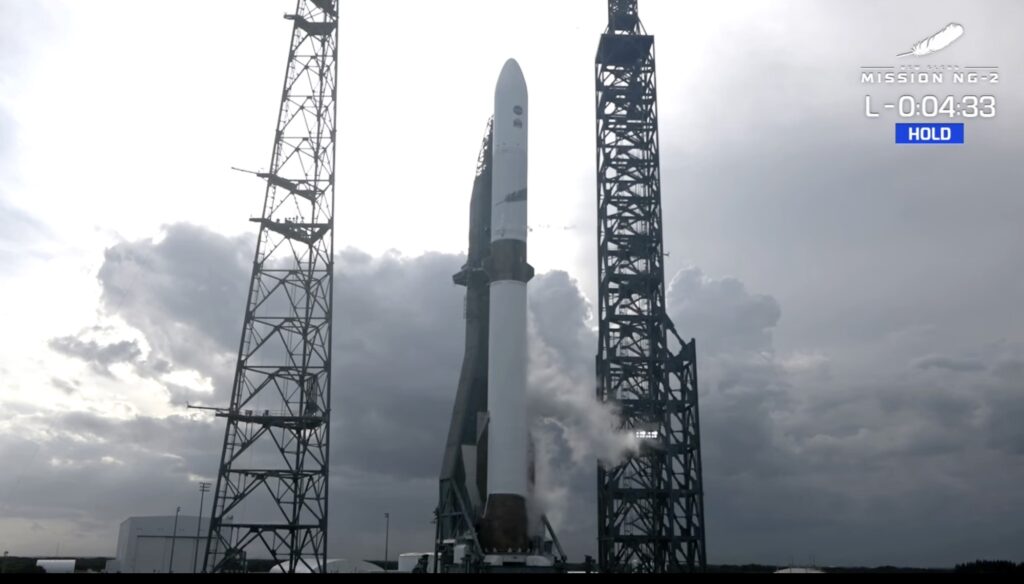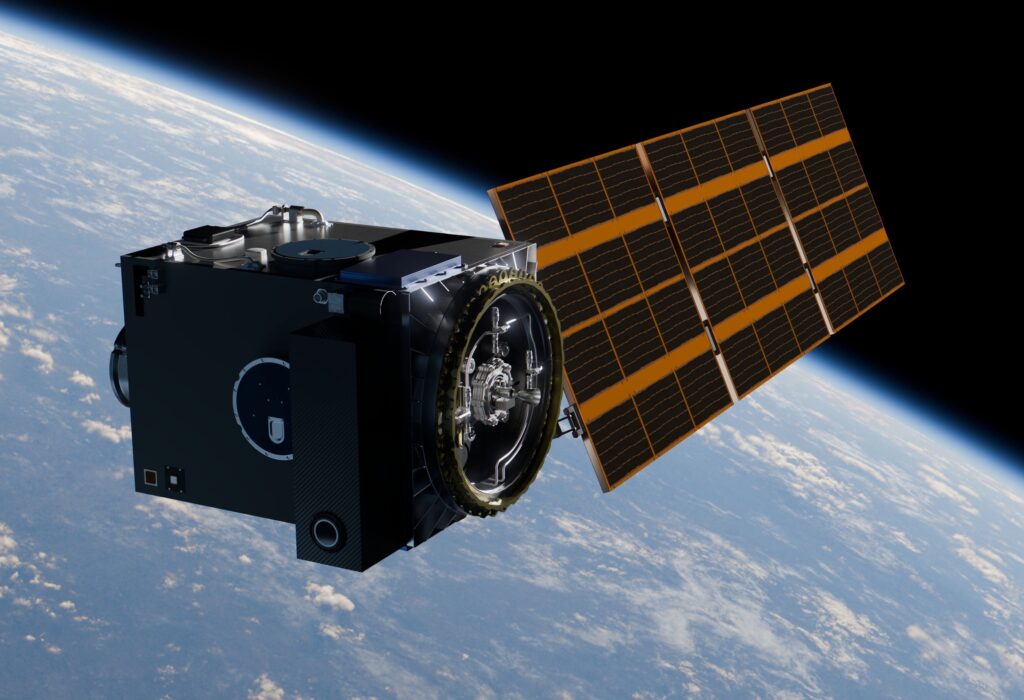Now Reading: Mobile Private Networks are a great opportunity for direct-to-device satellite operators to secure and grow their enterprise business
-
01
Mobile Private Networks are a great opportunity for direct-to-device satellite operators to secure and grow their enterprise business
Mobile Private Networks are a great opportunity for direct-to-device satellite operators to secure and grow their enterprise business


The focus of direct-to-device (D2D) services so far has been mainly on extending the coverage of terrestrial cellular networks for cell phones and remote IoT devices. Although this presents a great business opportunity for both D2D satellite and terrestrial Mobile Network Operators (MNOs), the satellite industry needs to be conscious about another fast-developing opportunity in the terrestrial cellular industry: Mobile Private Networks, which can probably also be addressed with D2D services. These services are poised to become a critical part of making D2D megaconstellations financially feasible in the long-term. But operators need to decide to pursue these services now, before they deploy their satellites, or else they’ll risk missing out on the unaddressed market.
What are Mobile Private Networks?
Mobile Private Networks (MPNs) are terrestrial private cellular networks operated in a limited geographical area like a large building, a business or industrial area, which is installed and operated for the benefit of specific enterprises, governments and other institutions. MPNs comply with terrestrial cellular LTE / 4G and/or 5G 3rd Generation Partnership Project (3GPP) standards. They are mainly used for so-called IIoT (Industrial Internet of Things) applications to connect, collect data from and manage and steer devices, machines and processes. To secure on-premises service redundancy and augmented network capacity and for the integration of off-premises remote and moving company resources these networks are using a dedicated and tailored slice of public cellular networks.
After many years of very slow adoption, MPNs are now really taking off. This is mainly driven by the recent evolution of 5G from Non-Stand Alone (NSA), which are still using existing 4G core networks for control functions, to Stand-Alone (SA) networks. These SA networks are end-to-end 5G with both a 5G radio and a 5G core network. This now provides enterprises the full range of 5G capabilities which allows them to address more demanding use cases and obtain more benefits from these networks than before. As a result of this, the adoption of MPNs is expected to grow exponentially over the next few years.
Over the last few years, the revenues of terrestrial Communications Service Providers (CSPs) in the enterprise segment are growing at a faster rate than in the consumer segment. The GSM Association estimates the currently addressable Business to Business (B2B) market for operators to be $400 billion, which accounts for around 35% of the current global mobile operator revenues. Besides this, operators are looking to monetize their massive investments in 5G and for this, need to look beyond consumer-centric, basic connectivity use cases. Therefore, MPNs will, as part of the operators B2B portfolio, become of crucial importance to them and potentially generate major additional revenues and high margins in the near future.
Why should D2D operators consider providing MPN services?
All D2D operators are working closely together with terrestrial CSPs to deliver their services to the end-users. Because D2D operators have to do their utmost to obtain the preference of MNOs over their competitors, it is also of major importance for them to assess how with their D2D services they can support these terrestrial operators in their MPN endeavors. Because these capabilities are very valuable for enterprise clients, who are using these MPNs, this will be an important additional revenue source for both terrestrial cellular and D2D satellite operators.
Besides this, providing MPN services will make D2D operators less dependent on the adoption of their services by the consumers in less developed countries with limited terrestrial network coverage. This is very important because as a result of the mounting geopolitical tensions and the very successful Belt and Road Initiative (BRI) of China, very close relationships have been established between China and many countries in “the Global South”. This will facilitate an easy market entry of Chinese D2D services and most probably will make it very difficult for D2D operators from Western countries to obtain regulatory market access in these countries. Therefore, providing MPN services to B2B clients in the more developed Western countries could very well become of critical importance for the long-term financial feasibility of these D2D constellations.
Because this MPN business potentially can become so important for D2D operators, it has become really important for them to assess how their D2D services can be used to extend network coverage of MPNs beyond the limited reach of the terrestrial cellular networks.
How D2D services can enhance the capabilities of MPNs
Taking into consideration the service characteristics of the current and near future D2D services, which are still mainly LTE / 4G based, the very high requirements for primary on-premises MPN services can only be partly met. However, where it comes to less demanding requirements for secondary service redundancy and incidental augmented capacity for on-premises MPNs, and integrating remote and moving company resources with less-demanding requirements, several of these D2D constellations will be able to offer useful capabilities.
The most promising market segments for MPNs are energy, utilities, agriculture, manufacturing, healthcare, transportation, logistics and automotive. Because these are all segments with both on-premise and large-scale off-premise assets and operations, D2D services can play here potentially a big role complementing the terrestrial connectivity services.
For example, in the case of an MPN being used to manage all critical processes at a nuclear power plant, the highest 5G MPN service requirements have to be met. But when it comes to managing households’ electronic electricity meters, steering capacity and supervising the electricity grid in a large territory, less demanding cellular service such as 4G can do the job.
The same counts for healthcare applications where MPN used to manage and control all the internal and critical hospital processes, have much higher service requirements than those applications which periodically retrieve data from a patient’s sensors spread over a large area outside of the hospital.
Besides coverage, D2D satellite services have another very important advantage over public terrestrial cellular services for secondary on-premises and primary off premises use. Especially for enterprises with multi-national or global operations D2D satellite services offer, with only a one-time global integration, service consistency, QoS (Quality of Service) and end-to-end security on a global scale. When, instead of this, an enterprise wants to use local public terrestrial cellular networks it has to cope with all the different network deployments of each Mobile Network Operator (MNO) in each country which will be very complicated and much more expensive then the option with D2D satellite services.
What D2D operators need to do to address this opportunity now
Because D2D operators are still in the initial phase of launching their constellations, they have to decide now, before full scale deployment, if they want to address this emerging MPN opportunity and apply the necessary changes in their systems and satellites which will enable them to provide services optimized for the needs of MPN clients. If they don´t do this now, then their chances of still addressing the MPN opportunity in the future will be very slim and costly.
Because the different D2D operators together provide a rather fragmented service offer, they need to be open for cooperation with intermediary platform providers that will bundle their services with services from other D2D operators, provide advanced service tailoring features and make these easily available for providers or users of MPNs. Besides this D2D operators have to develop an effective wholesale strategy for these intermediary partners, which can also assume the role of traffic aggregator, and consider which changes will be needed in their system for this in-direct provisioning of their services to MPN clients.
Which D2D-operators can best fulfill the MPN requirements
In general, D2D operators who can provide the highest bandwidth service and widest portfolio of services are best positioned to take the lion´s share of this business.
Within that perspective the very basic services of legacy satellite operators like Globalstar or Iridium, which are currently still limited to messaging, basic IoT and SOS services, will most probably not allow them to service the needs of MPN clients.
Fully 3GPP standardized 5G D2D services from new market entrants will not come available before 2030 and therefore cannot be used to address this imminent MPN opportunity.
The best option for MPNs will be provided by the partly 3GPP (pre-release 17) standardized D2D operators like Space Mobile, Starlink D2C and Lynk or release 17 NB-IoT standardized D2D operators such as Satelliot and OQTech who will all roll out their service globally in 2026. Especially Space Mobile who can provide the most enhanced service portfolio and has amongst its founding shareholders Vodafone and AT&T, who are respectively global leading providers of MPN and IoT solutions, is very well positioned to secure a substantial part of this business.
What still remains unclear is how fast D2D services from Chinese operators, who apparently are recently making huge progress in launching their constellations, will come available. Because these projects are surrounded by great secrecy, no information is yet available on their service portfolio and planning for global rollout, which at this moment makes it impossible to determine what role they can play in MPNs.
Besides service portfolio and rollout plans it will also be of crucial importance which of the D2D operators will be able to offer the most, and best suitable additional spectrum for MPN services. Recently both Starlink and Space Mobile acquired big blocks of spectrum and because this fight for more spectrum is far from over, we have to see how this will develop over time.
Ticking clock
D2D services can definitely play a role in enhancing the capabilities of terrestrial cellular networks used for MPNs.
Based on the global scale of D2D services these can contribute to increasing availability, capacity and coverage, provide control over the QoS, enable end-to-end security, and when the right intermediary platform is used, also provide seamless integration with the terrestrial cellular networks used for MPNs. Because MPNs can also be an important source of additional revenues for D2D operators, and can make them less dependent on geopolitical developments, MPNs are a very interesting opportunity to be addressed by D2D operators.
So, for D2D operators the question is: Are they going to react now and secure this MPN opportunity years before the market entrance of the fully 3GPP-standardised D2D satellite constellations, or wait and let them take this promising business whenever they will enter the market.
Providers of MPNs have to decide now, if they want to leverage the capabilities from the partly 3GPP standardized D2D services to offer enhanced MPN services, especially to their multi-national and global enterprise clients, and as such obtain a competitive advantage and secure the highest value segments of the MPN market.
Enrico Ottolini is co-founder and executive director of Planet Earth Connect. He has more than 25 years of extensive international experience in both the mobile and satellite communications industry. Based on this experience, he guides telecom operators and solution providers through the rapidly changing and fragmented LEO-sat landscape. Currently, he and his team are in the process of creating a platform which will merge both these technologies into one fully integrated and seamless TN/NTN enterprise solution.
SpaceNews is committed to publishing our community’s diverse perspectives. Whether you’re an academic, executive, engineer or even just a concerned citizen of the cosmos, send your arguments and viewpoints to opinion@spacenews.com to be considered for publication online or in our next magazine. The perspectives shared in these opinion articles are solely those of the authors.
Stay Informed With the Latest & Most Important News
Previous Post
Next Post
Previous Post
Next Post
-
 012024 in Review: Highlights from NASA in Silicon Valley
012024 in Review: Highlights from NASA in Silicon Valley -
 02Panasonic Leica Summilux DG 15mm f/1.7 ASPH review
02Panasonic Leica Summilux DG 15mm f/1.7 ASPH review -
 03How New NASA, India Earth Satellite NISAR Will See Earth
03How New NASA, India Earth Satellite NISAR Will See Earth -
 04And Thus Begins A New Year For Life On Earth
04And Thus Begins A New Year For Life On Earth -
 05Astronomy Activation Ambassadors: A New Era
05Astronomy Activation Ambassadors: A New Era -
06SpaceX launch surge helps set new global launch record in 2024
-
 07Space Force plans new ‘Futures Command’ amid pressure to speed up modernization
07Space Force plans new ‘Futures Command’ amid pressure to speed up modernization


















